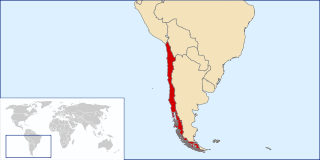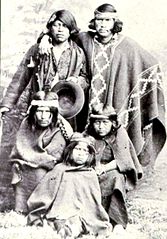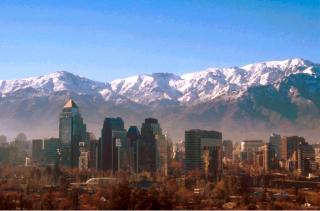
Exploring the history and experiences of mixed heritage persons and inter-racial relationships across the world

Exploring the history and experiences of mixed heritage persons and inter-racial relationships across the world
 Despite the varying results of ethnic surveys of some of Chile’s 15 million people, there is no doubt there is a substantial mixed population. The majority of Chileans consider themselves white though genetic studies suggest that some 65% of them are Mestizos, that is mixed European and Amerindian, with majority European ancestry. Even amongst those who self-identify as Mestizos, there is significant European ancestry in their genes.
Despite the varying results of ethnic surveys of some of Chile’s 15 million people, there is no doubt there is a substantial mixed population. The majority of Chileans consider themselves white though genetic studies suggest that some 65% of them are Mestizos, that is mixed European and Amerindian, with majority European ancestry. Even amongst those who self-identify as Mestizos, there is significant European ancestry in their genes.
The small Amerindian contribution to modern Chilean genes is not surprising considering that Amerindians make up only 4% of the population with most of those from a group known as Mapuche but also as Araucanians, Araucans or Moluches, a fiercely protective tribe who had even managed to thwart the Incas who only managed to extend their empire to the North of what is present day Chile.
 The Spanish first arrived in 1535 in the form of a band of Spanish conquistadors from Peru seeking gold. These fortune hunters came up against the Mapuche people, Whilst the Spanish did not find gold or silver, Chile’s agricultural potential led to the formal colonisation of the country which started in 1540 formalised by the founding of Santiago as the capital on 12th February, 1541. As normal, contact with the Europeans meant the introduction of Old world diseases which decimated some populations. Despite that, the Mapuche did not take colonisation lying down and there were several insurrections in 1553, 1598 and 1655. The Spanish crown recognised that enslavement of these people did not lead to peaceful co-existence and abolished slavery in 1683. As with many colonies in the early days, miscegenation occurred quite extensively and the beginnings of the mestizo population became evident.
The Spanish first arrived in 1535 in the form of a band of Spanish conquistadors from Peru seeking gold. These fortune hunters came up against the Mapuche people, Whilst the Spanish did not find gold or silver, Chile’s agricultural potential led to the formal colonisation of the country which started in 1540 formalised by the founding of Santiago as the capital on 12th February, 1541. As normal, contact with the Europeans meant the introduction of Old world diseases which decimated some populations. Despite that, the Mapuche did not take colonisation lying down and there were several insurrections in 1553, 1598 and 1655. The Spanish crown recognised that enslavement of these people did not lead to peaceful co-existence and abolished slavery in 1683. As with many colonies in the early days, miscegenation occurred quite extensively and the beginnings of the mestizo population became evident.
The vast majority of un-colonised Mapuche peoples formed a south border barrier which became known to the Spanish as Araucanía or Araucana. With the Atacama Desert to the North, the Andes Mountains to the East and the Pacific Ocean to the west, Chile was a little isolated from the rest of South America. Still it was a prized procession constantly under threat from the southern Mapuche and Spain’s colonial rivals, the British and the Dutch, that it eventually had one of the Americas largest army. Undoubtedly, the predominantly male soldiers contributed to the growing mestizo population.
However, a continuous stream of Spanish immigrants throughout the 16th century meant that the general census of 1777 and subsequent regional ones in 1784 band 1812 reported a majority white population. Mixed groups made up between 7% and 10% of the numbers and this included Mulattos, mixed European and Black African persons. The lack of mineral wealth and the relatively European style agricultural activity, Chile did not require a large labour pool like the other colonies of the Americas which had resulted in the slave trade. Chile’s participation in that trade is considered to be virtually nil and yet interestingly enough, some 10% of the 1777 census population were in fact black. Today, Mulattos and Blacks make up a very small number of Chileans.
 On 12th February, 1818, after some intermittent warfare, Chile was proclaimed an independent republic and some years later when the politicking had settled down, began in 1861, the Occupation of Araucanía or "The Pacification of Araucanía". This process to incorporate the Mapuche land and people into the Chilean fold continued until 1883 though even then there was continued resistance after that date. The Mapuche were assimilated into Chilean society contributing to the mestizo community and reducing their population numbers greatly. Independent Chile abolished slavery – African slavery – soon after independence in 1818. European immigration from a large number of European countries to Chile continued throughout the 17th, 18th and 19th centuries with significant populations arriving from Spain, Germany and Croatia. Asian immigrants hail from Palestine and other parts of the Middle East including Israelis.
On 12th February, 1818, after some intermittent warfare, Chile was proclaimed an independent republic and some years later when the politicking had settled down, began in 1861, the Occupation of Araucanía or "The Pacification of Araucanía". This process to incorporate the Mapuche land and people into the Chilean fold continued until 1883 though even then there was continued resistance after that date. The Mapuche were assimilated into Chilean society contributing to the mestizo community and reducing their population numbers greatly. Independent Chile abolished slavery – African slavery – soon after independence in 1818. European immigration from a large number of European countries to Chile continued throughout the 17th, 18th and 19th centuries with significant populations arriving from Spain, Germany and Croatia. Asian immigrants hail from Palestine and other parts of the Middle East including Israelis.
 Chile’s other indigenous group are the Aymara in the North who the country inherited when Chile extended her territory in the Treaty of Peace and Friendship of 1904 with neighbouring country Bolivia on 20th October, 1904 – some 20 years after the War of the Pacific which ran from 1879 to 1883. The Aymaras main population lies in Bolivia and they make up, as in the 1992 census, only half a percentage of Chile’s population. The other native group are the Rapa Nui, Polynesian people indigenous to the Easter Islands and the Pacific. They make up less than a quarter of a percentage of the population. The social definition of who is native is dependent on visual cues and more importantly on cultural ones. Only if the individual has an indigenous name, speaks an indigenous language and maybe even lives in an indigenous community are they socially considered native.
Chile’s other indigenous group are the Aymara in the North who the country inherited when Chile extended her territory in the Treaty of Peace and Friendship of 1904 with neighbouring country Bolivia on 20th October, 1904 – some 20 years after the War of the Pacific which ran from 1879 to 1883. The Aymaras main population lies in Bolivia and they make up, as in the 1992 census, only half a percentage of Chile’s population. The other native group are the Rapa Nui, Polynesian people indigenous to the Easter Islands and the Pacific. They make up less than a quarter of a percentage of the population. The social definition of who is native is dependent on visual cues and more importantly on cultural ones. Only if the individual has an indigenous name, speaks an indigenous language and maybe even lives in an indigenous community are they socially considered native.
Today, Chile is one of South America’s richest and most stable countries and since 1990 has had a declining birth rate, most probably due to the rising standard of living and growing middle class. Whilst race as such does not play a role in Chilean society, class does and higher socioeconomic status does correlate with lighter skin, a kind of Colourism.
LINKS